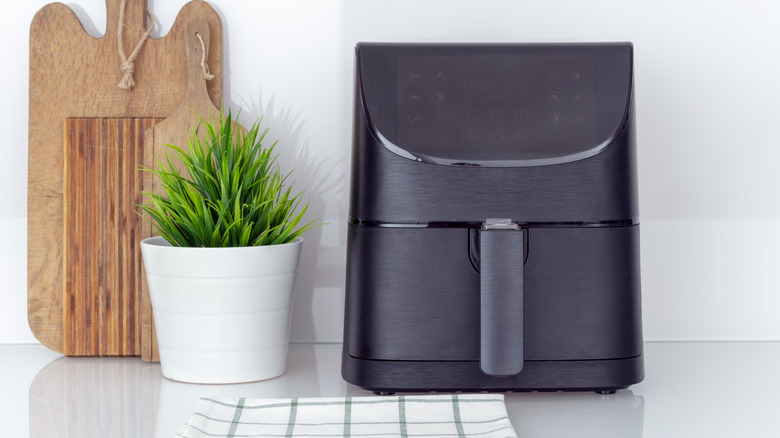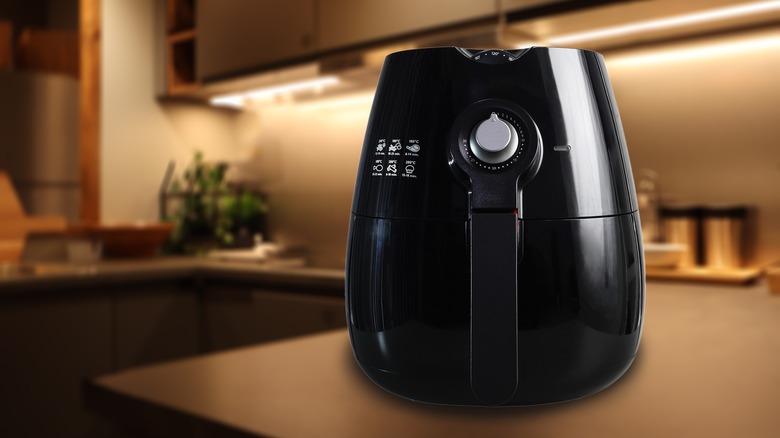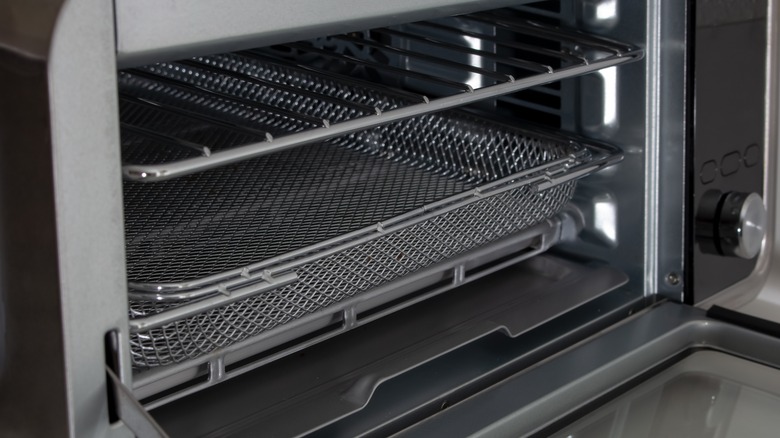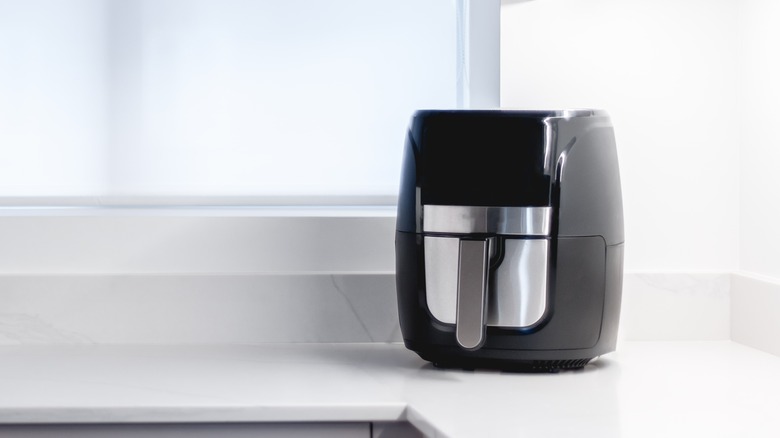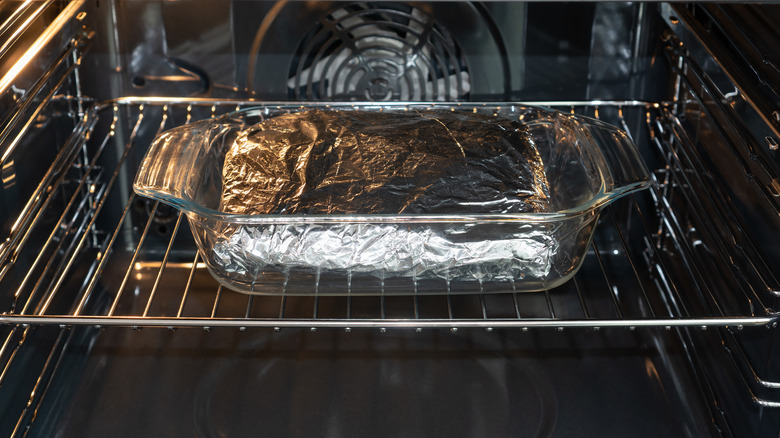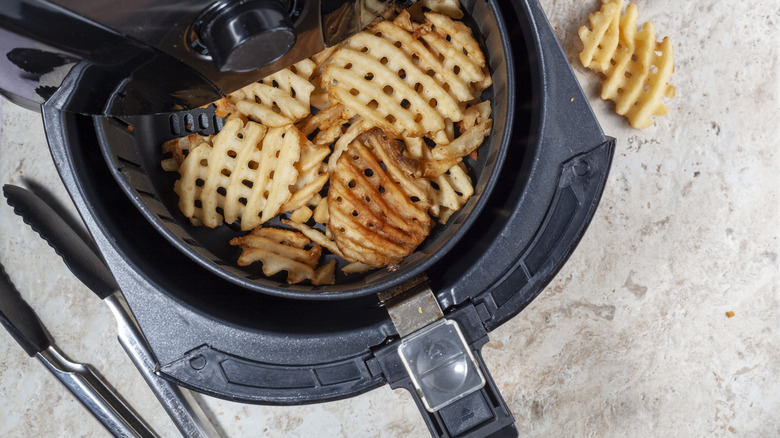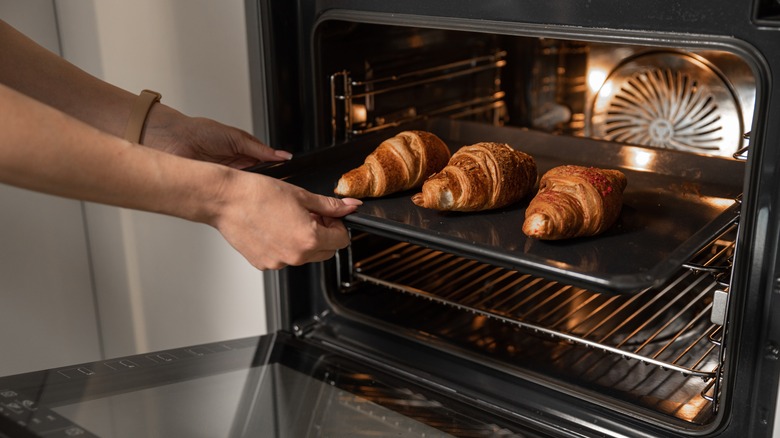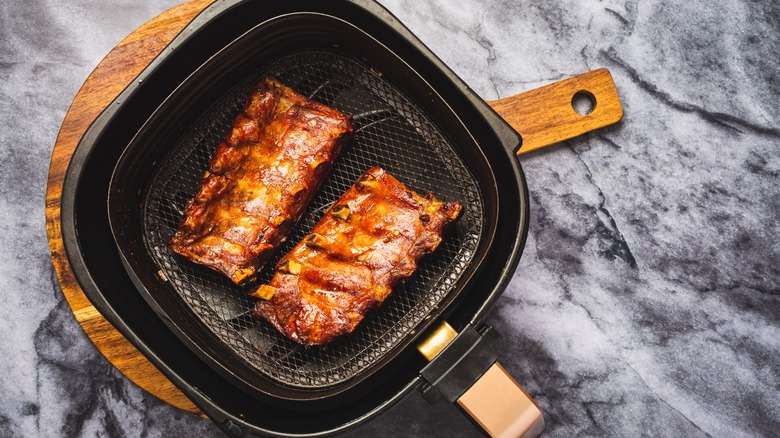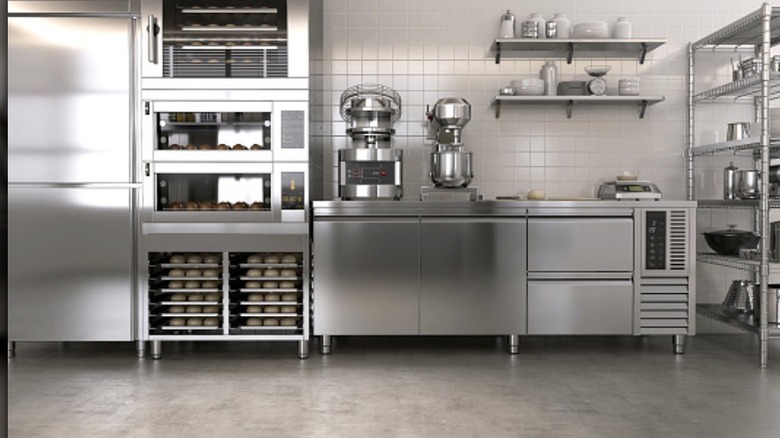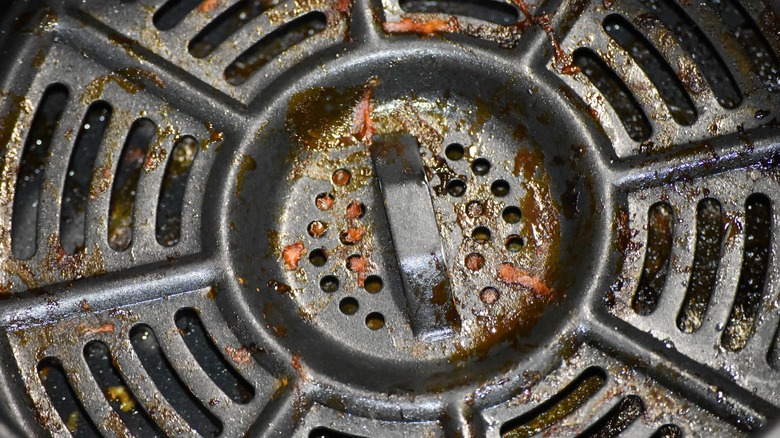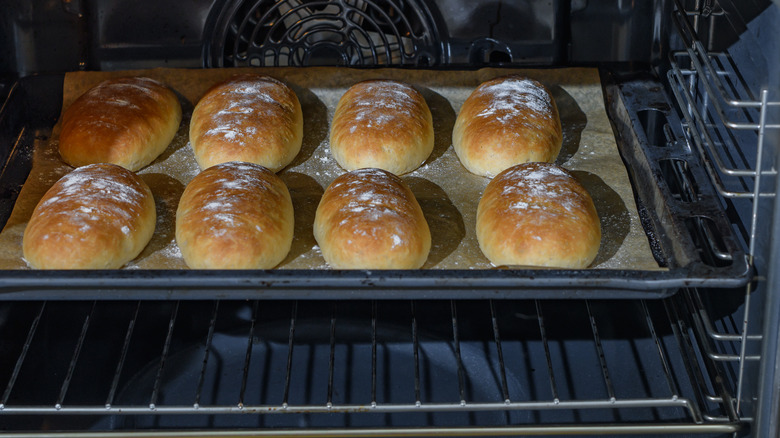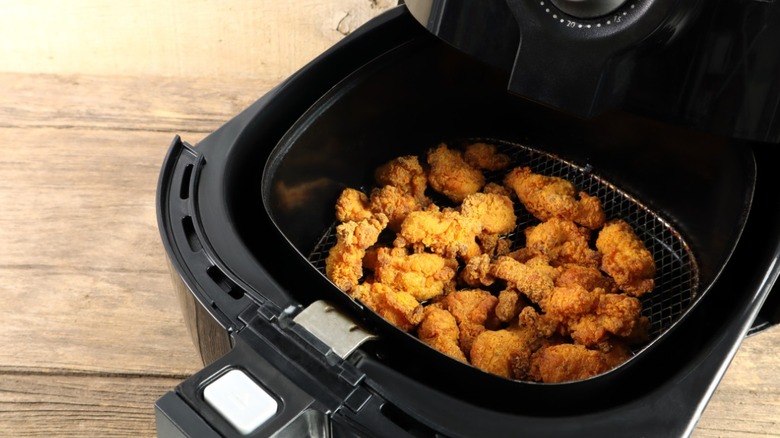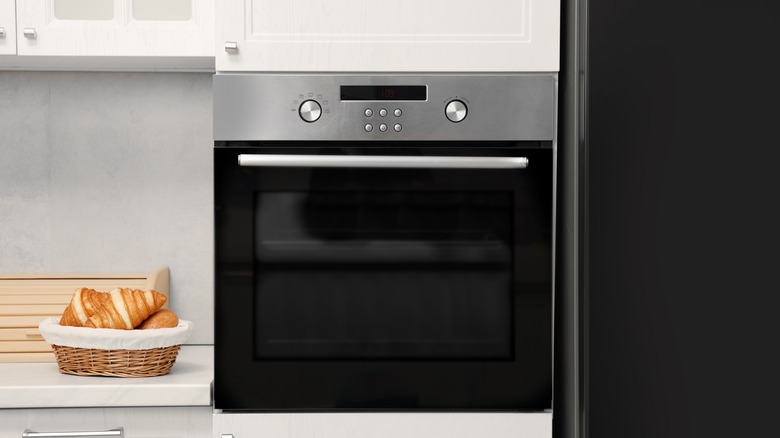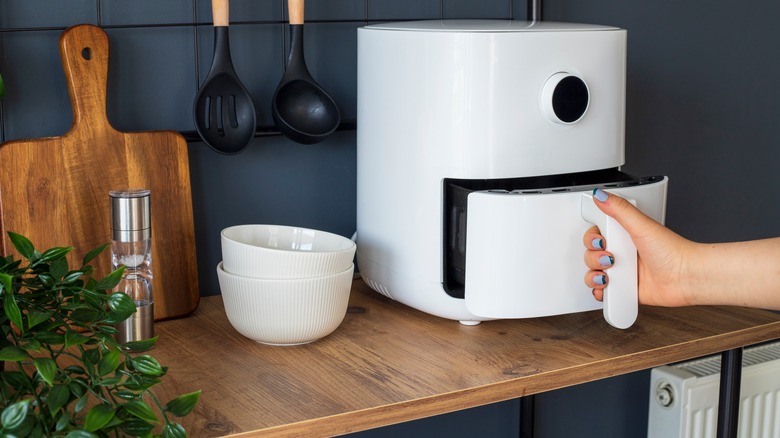Air Fryer Vs Convection Oven: Everything You Need To Know, According To A Home Chef
Both air fryers and convection ovens are popular kitchen appliances that use similar technology — circulating hot air is pushed through the space to cook food evenly. The elder statesmen of the pair — the convection oven — was invented in 1967 by the Malleable Iron Range Company. Professional bakers adopted them immediately for their consistent results, but many home cooks balked at their price tag. When air fryers hit the scene around 2005, they took a few years to catch on, but now this spaceship-shaped appliance seems ubiquitous in home kitchens. Because both use circulated hot air for cooking, many people believe they are essentially the same appliance.
However, they have distinct differences in terms of design, cooking efficiency, price, and usability. As a recipe developer, experienced gluten-free baker, and dedicated culinary explorer, I have both a full-size convection oven and a countertop air fryer. I have enjoyed exploring the possibilities of these appliances for a variety of uses. My research along the way also uncovered more reasons why each is particularly good at its task. Here's a comparison to help you understand their unique features and benefits.
What is an air fryer?
Air fryers are countertop miracle workers. When it comes to cooking up crispy snacks and smaller portions, they can't be beat. They can be circular, square, or rectangular, but most have a handle used to remove the basket area where food is cooked. In the basket is a metal grate or grill where food is placed for cooking. This grate or grill often comes with a nonstick coating.
The fan on an air fryer is built in and audible during cooking time (some models are noisier than others). The heating element is located inside the appliance above the basket, and the fan circulates hot air around the basket, including underneath the metal grate or grill.
Some air fryers have a simple knob for adjusting both temperature and cooking time, while others are digital and offer programmed times for specific food (i.e., frozen vegetables or French fries). Air fryers are compact and efficient, heating up quickly and crisping up food straight from the freezer (or cooking it from fresh).
What is a convection oven?
Convection ovens work in much the same way as air fryers. A fan at the back of the oven circulates heat that comes either from the bottom of the oven in the case of a gas range or the top or bottom of electric ovens. They are available in full-size and countertop models, but for this comparison, I will focus on full-size convection ovens.
Many people don't even realize their oven has a convection feature. Dedicated home bakers utilize this more frequently than savory cooks or those looking to simply bake or heat up a quick meal. Convection settings on regular ovens are generally hotter than regular settings, so it is important to pay attention to your food as it cooks. It's easy to overcook or burn food in a convection setting if you are not used to it. Convection ovens generally have longer preheating and cooking times. This is due to their larger volume, but it's important to keep that in mind if energy efficiency is important to you. Whether you bake or roast, a convection oven is a handy tool.
Air fryers are great space savers
Air fryers are perfect for crispy cooking when you don't have a lot of space. These small-but-mighty appliances are designed for compact areas, and they come in different shapes so you can choose one that tucks into a corner of the counter or neatly away in a cupboard.
Air fryers are available in sizes that range from three to six quarts, a capacity measurement that can be hard for most people to interpret. Consider a larger air fryer if you are cooking for four or more people. If you are dining solo or cooking for a couple, a three-quart air fryer might be just fine. There are larger-capacity air fryers on the market, though. If you routinely cook for a crowd or already own multiple appliances sized up for higher capacity, consider looking for an air fryer that holds eight quarts or more. Keep in mind that crispy cooking depends on allowing enough space in the air fryer — so choose the size that works best for you.
Convection ovens are best for multiple dishes (and large portions)
If counter space is at a premium but you still want to host large gatherings or family dinners, convection ovens are a good choice. They are the size of a standard oven and can be used for multiple dishes at a time (just be sure to adjust recipes to the different temperatures if you need to). Convection ovens come with racks but unlike a conventional oven, food cooks evenly no matter where it's placed in the oven.
In addition, convection ovens can hold more food than an air fryer. The capacity of a convection oven will depend on the size; if you are a frequent baker or need more room to stretch your culinary wings, consider investing in a convection oven. Countertop versions suffer from the same lack of useable space that air fryers have, but the under-counter or wall-mounted ovens can handle anything you throw at them.
Air fryers use less oil
One of the best features of air fryers (and their most popular selling point) is the fact that they use very little oil for intensely crispy food. If you have missed fried chicken, crispy French fries, or anything else that is battered and cooked to crackly perfection, an air fryer might be perfect for you. Instead of using cups and cups of oil heated to 350 degrees Fahrenheit — a hassle and a danger — most air fryers produce the same results with as little as 1 teaspoon of oil.
Air fryers circulate hot air around food, even underneath. This hot air creates a crispy exterior comparable to deep frying but without large amounts of oil. For people who have avoided fried food due to health concerns, and those who don't like dealing with the mess and disposal of quarts of oil, air fryers help you get that crispy satisfying crunch.
Convection ovens are best for baked goods
There is a reason why professional bakers lean toward convection ovens. Delicate pastries and convection ovens go together like chocolate and croissants. The even heat distribution makes for better baking, and professional bakers wouldn't use any other type of oven for their work.
Yes, a convection oven uses a fan similar to the one in an air fryer, but the larger cooking space and more control mean that your delicate pastries brown and cook evenly. Commercial kitchens use convection ovens for their fast, consistent results, but don't let the professionals have all the fun. Convection ovens are great for pizza with that chewy/crispy crust combo, and they produce beautiful roasted meats and vegetables. If you are moving from a standard oven to a convection oven, they can take some getting used to. Start small and experiment with time and temperature for the best results.
Air fryers are great for hot-weather cooking
When the temperature soars and the last thing you want to do is heat up the house but falling-off-the-bone ribs and onion rings are on your mind, reach for the air fryer. Air fryers are excellent for hot weather cooking, with fast preheating times and even faster cooking. Additionally, the compact size means you just aren't creating that much hot air to circulate around the house in the first place. Air fryers are great for fried snacks, but you can also bake a cake and cook rice in your air fryer.
The portability of an air fryer is a big plus, too. If the house is too hot for an air fryer, head to an outdoor plug and cook there. You can also take the show on the road; air fryers make perfect camp food when outdoor cooking fires are prohibited or you just want the convenient taste of home.
Convection ovens cost more
Commercial convection ovens can cost an eye-watering $7,000 or more, but even a small-scale home version is more than a standard oven by hundreds of dollars. The price you pay also depends on whether or not you are using an electric oven or having a gas line added. Some argue that the additional cost is recouped across the years of ownership; these ovens are more efficient and classified as energy-saving appliances. They cook food faster, which means you use less energy — these savings can add up if you cook and bake more than once a day.
To be fair, you can certainly get a countertop convection oven at a more affordable price point than replacing your conventional oven. These work in the same way as a full-size version and are for more than just the odd bit of toast or reheating leftover pizza. But for a full-sized baker's dream, expect to spend a thousand dollars or more.
Air fryers are easy to clean
If you live in a household where the cook never cleans, this feature might not matter as much to you. But for families where the chef and the dishwasher are one and the same, air fryers are the clear winner. They are easier to clean after cooling than a convection oven, which means you'll be more inclined to take care of the appliance. Even self-cleaning, full-sized convection ovens need a more detailed cleaning from time to time, and countertop versions must be cleaned by hand.
Most air fryer baskets and trays are dishwasher safe, making clean-up a snap. Some cooks use air fryer liners made of silicone or paper, but these impede airflow and can defeat the purpose of the appliance. Air fryers should be thoroughly cleaned after each use. Take care to remove all bits of food and stray scraps of oil (which should be minimal). If you prefer not to use the dishwasher, hot, soapy water and a good rinse will do the trick. You can also soak air fryer baskets in hot water for a bit before cleaning; if your basket has a non-stick coating, use only plastic scrubbers or sponges.
Convection ovens are more consistent
A full-size convection oven is going to produce more consistent results than a countertop version of itself or an air fryer. This goes far beyond the design of the oven or even its size. The main culprit for inconsistent air fryer results is how food is packed in. Some people overload their air fryers; this results in uneven cooking and a less crispy final product.
On the other hand, convection ovens are larger and offer more space to spread out. Food can be placed on multiple racks and multiple trays, with plenty of space for airflow and circulation. Your family may not mind if one piece of food is crispier than the next, but for most temperamental pastries and other baked goods, the difference is clear. There are, of course, exceptions to this rule — French macarons prefer a less hostile and heated atmosphere to reach perfection. But for scones and bread, convection ovens make for beautiful baked goods.
Air fryers make the best chicken wings
Hard-fried chicken wings are a pleasure to eat. The skin is shatteringly crunchy, the meat flavorful and tender. For me, achieving this result at home without an air fryer is impossible. I refuse to use the quantities of hot oil required for such culinary perfection made in the traditional fashion, but for years I missed eating my weight in chicken wings. Buying a deep fryer or using an outdoor deep fat fryer seemed excessive, but there had to be a way to mimic this result at home.
Air fryers make this magic happen. They use less oil and produce a crispy, delicious wing in the time it used to take to simply heat up oil in a pot. For the crispiest air fryer chicken wings, pat them completely dry before tossing in plenty of seasoning (at least salt and pepper but customize a seasoning blend you like) and a ½ teaspoon of baking soda. The baking soda raises the pH of the wing's skin, breaking it down before it even hits the heat of the air fryer. You don't need to add oil or any other flour or flour substitute, but a little cooking spray on the air fryer basket never hurts. Fry to crispy perfection at around 400 degrees Fahrenheit, and toss in your favorite sauce.
Convection ovens last longer than air fryers
Convection ovens have been designed to serve hungry families for a long time. They are built to safety standards and with materials that can withstand high temperatures and daily use and abuse. Additionally, these ovens are often self-cleaning which makes maintenance easier. Some countertop convection ovens have also faithfully served their families for years.
Many air fryers use plastic parts and cheaper metal as their main components. Plastic is often the first choice of companies trying to create a more affordable appliance that is lightweight. This is not to say they won't produce good results, but comparing the longevity of a steel convection oven with a plastic air fryer is like comparing apples to kumquats. The metal components of a full-size (and even countertop) convection oven are built to last; the average lifespan of a convection oven is at least 10 years, but proper care and maintenance can extend that even further. Gas convection ovens tend to last longer than their electric counterparts. Regular use of air fryers, however, put them at a lifespan of around three to five years — of course, that also depends on product quality, what you're using it for, along with your maintenance routine.
Which is best for you?
Your cooking habits, kitchen space, and budget are important considerations when choosing between an air fryer and a convection oven. If you are ready to replace your full-size oven, and it's in your budget, adding a convection oven to your kitchen tools might be a good bet — it's a more versatile appliance that can handle baking tasks, roasting, and cooking big meals. But this is a big investment; if you aren't a dedicated baker and your current conventional oven meets your needs, a convection oven might not be for you.
It is definitely easier and more affordable to experiment with an air fryer. If you have counter space and like to indulge frequently in crispy snacks (or want faster meals that use less oil), air fryers offer the opportunity for healthier crunchy snacking. For right around $100, even less for smaller models, you can add to your kitchen appliances with very little fuss. Of course, if fried food is rarely on the menu, and you don't have any counter space or storage to spare, skip the air fryer and start saving for a convection oven. Ultimately, both have unique advantages; some home cooks enjoy having both to cover a wider range of cooking needs.

